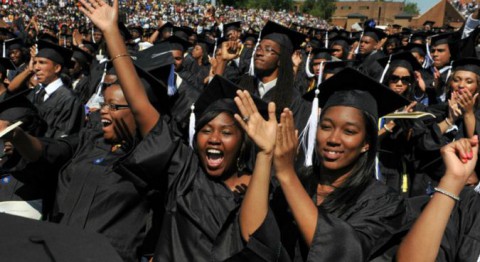 The United States Department of Education reports that from 1976 to 2010 the percentage of African-American students enrolled in college programs rose from 9 to 14%. During the same time period Hispanic student enrollment also rose from 3 to 13% while enrollment of Caucasian students decreased from 83% to 61%.
The United States Department of Education reports that from 1976 to 2010 the percentage of African-American students enrolled in college programs rose from 9 to 14%. During the same time period Hispanic student enrollment also rose from 3 to 13% while enrollment of Caucasian students decreased from 83% to 61%.
While the number of African-American students enrolled in college has increased, their graduation rates nationally are still lower than those of Caucasian students. But that data varies considerably, mainly with regard to which tier college is being studied. African-American students from top-tier schools like Harvard have only a 1% difference in graduation rates than lower-tier schools. Many factors may attribute to this trend.
If a student is a first generation college student, there may be financial issues at play as well as general support factors involved. In addition, when a student is attending school with family pressures or other outside challenges, it can be much more difficult to maintain the stamina and GPA to complete a program. Additionally, the college culture and general experience, from food choices to extracurricular activities, may cause some students to feel like an outsider in certain cases.
Student loan structure may also play a role. If a student has borrowed government-subsidized student loan money to pay for a two year college, they may have saved money up front, but will reach the limit to borrowing if they attend the transfer institution for more than two years. They may also reach the limit if they switch programs, or decide to double-major which may require an additional year or more of attendance. Reaching the maximum student loan dollars at the end of a program where the academic material is often more expensive and difficult to procure can also attribute to the decrease in graduation rates among students who face these challenges.
Across studies that look at graduation rates among African-American students, the most common cause of drop-out is money. Colleges that respond with supportive academic programs and also find ways to pair students with paid internships, summer jobs in their fields and on-campus work opportunities contribute to the overall improvement of graduation rates of African-American students as well as other under-represented groups. As the competition for top students increases, the graduation gap may decrease as college tailor programs to retain their brightest students.
References:
http://nces.ed.gov/fastfacts/display.asp?id=98
http://www.jbhe.com/features/65_gradrates.html









